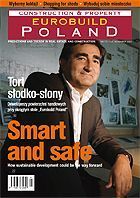Developers seem to be declaring – “the bigger the better” and are purchasing large chunks of land for projects, promoting them in the media, before breaking them up and selling the component parts, pocketing a hefty profit in the process. The glitter of Warsaw’s Miasteczko Wilanów, which was to have blazed a trail for such schemes, now seems to have faded somewhatRobert J. Moritz, board president of the stock-exchange listed TUP company, has this to say of Miasteczko Wilanów: “I don’t like it – it is not a town built from the foundations, but instead is a housing estate, a mere dormitory for thousands of people.” His company is soon to begin work on a multifunctional project in Siewierz – a Katowice suburb – where it has secured around 120-ha of land on the banks of the Przeczycko-Siewierski reservoir by signing preliminary contracts with private individuals and Elektrobud. The idea was born a month ago during charrette work






























































